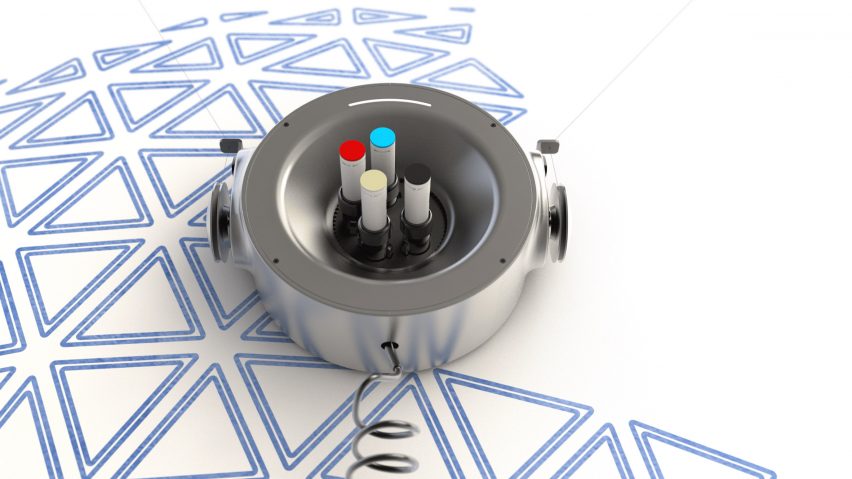
Carlo Ratti's scribing robot turns walls into "digital content canvases"
Italian architect Carlo Ratti has created an internet-connected writing robot that is able to draw and erase images on any surface.
The small Scribit robot allows users to personalise their walls with digital artworks. It will be unveiled at this year's Milan design week, taking place from 16 to 25 April 2018.
Requiring just two nails and a power plug, the device can be installed in less than five minutes. It then uses inbuilt engines to move, draw, erase and re-draw new content a limitless amount of times.
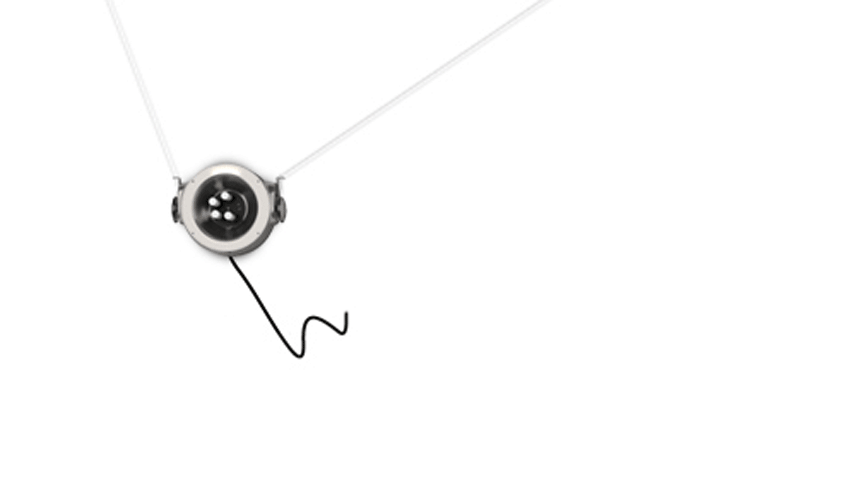
Users can either create brand new content or upload an existing visual file from the internet, which will then be autonomously drawn by Scribit. The robot is able to draw onto any wall surface, including whiteboards, glass and plaster.
"A restaurant can post the day's menu on its wall, a financial firm can post stock market updates in its lobby, or someone who loves art can project a Van Gogh – or their own drawings – onto their bedroom wall," said Ratti, who will join the judging panel at this year's Dezeen Awards.
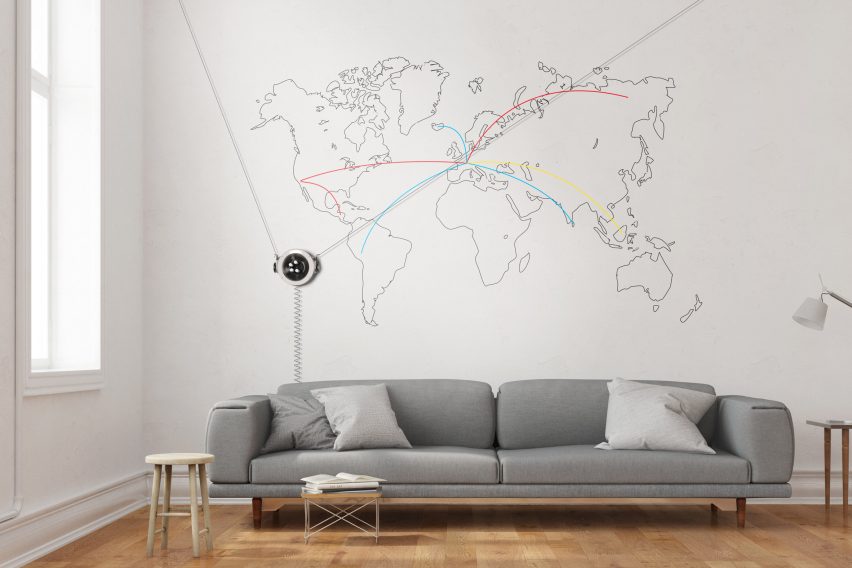
The digital device works on a two-axis plane, moving up and down two cables that hang from a vertical wall. After moving itself to the desired point, Scribit then uses markers to reproduce the content dictated by the user.
These marks can then be reversed by Scribit's erasing process, which works in a similar way. Once the relevant input is given by the user, Scribit knows where the previous content has been drawn and will follow its shape until the image is fully erased.
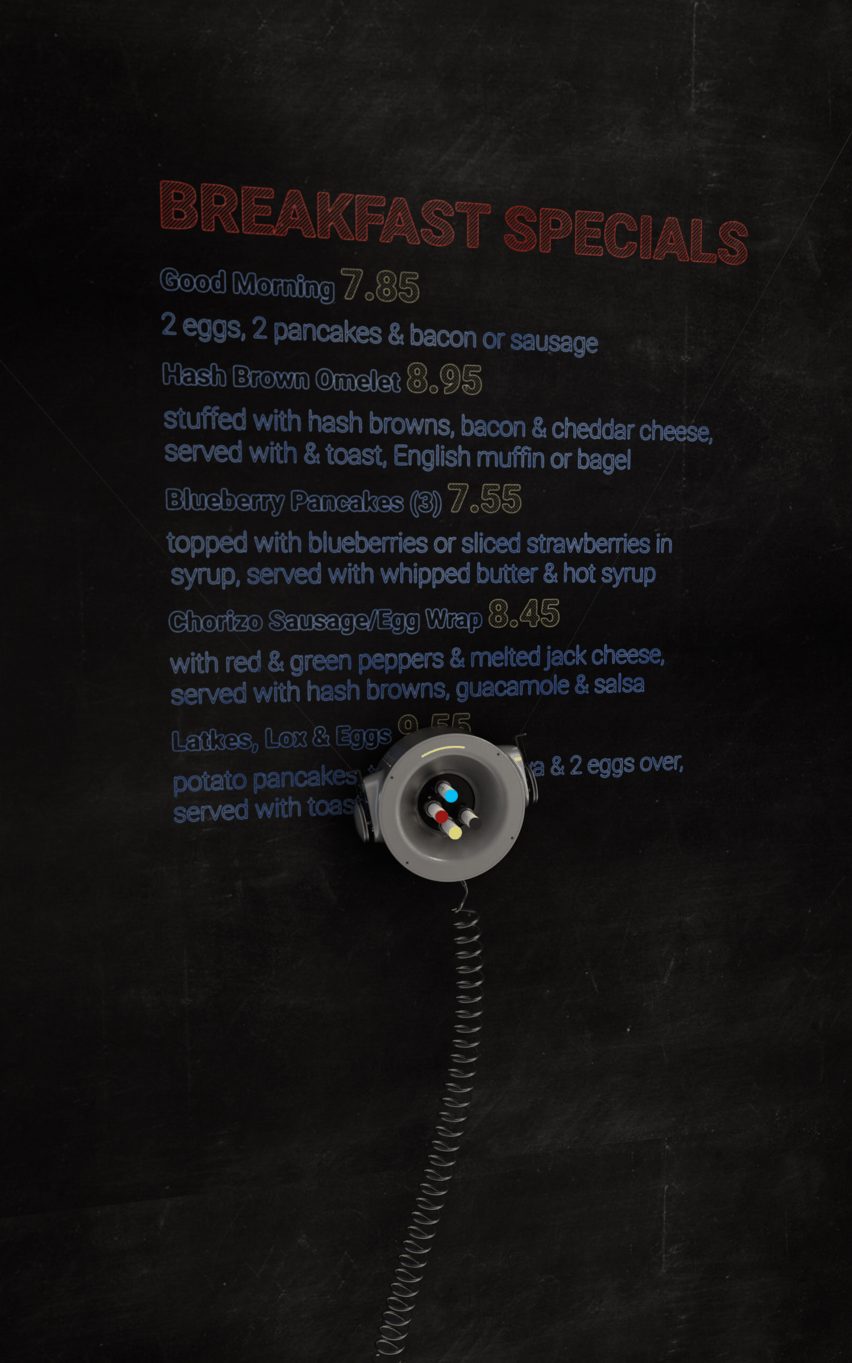
The robot is also able to reproduce any kind of data in real-time, including notes, messages, images and graphics. Once the user sends their digital information to the device, the plotter instantly reproduces it.
"We are totally deluged with information, and spend too much of our non-sleeping time in front of one form or another of a digital screen – TV, desktop computer, laptop, tablet or phone. Do we really want to add more screens to our lives?" said Ratti.
"Scribit offers up an alternative: a robotic system that draws on any kind of vertical surface, following a primordial act performed by humanity since our first cave graffiti," he added.
According to Ratti, Scribit will also offer users access to a vast range of digital content via a series of apps, where businesses or institutions would be able to develop and upload any type of content.
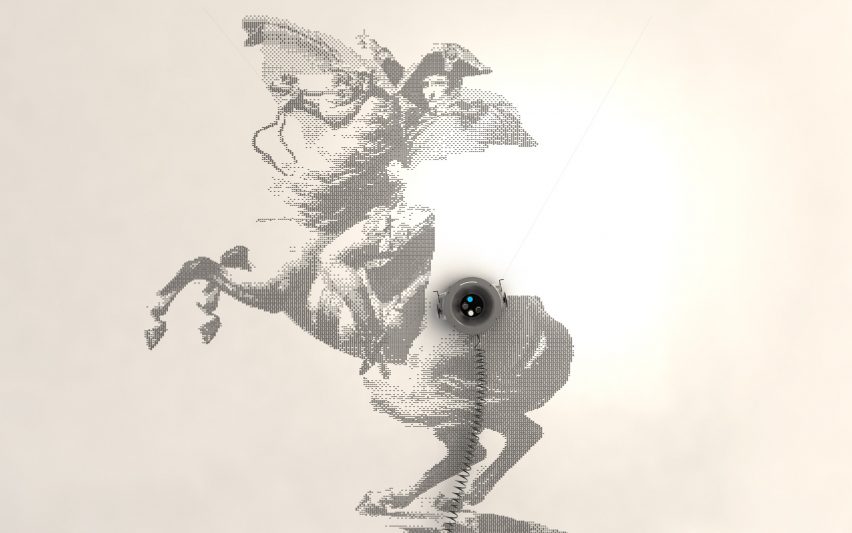
"You might draw on masterpieces from the best museums of New York, Paris or Tokyo, or discover the latest works by emerging artists," explained the architect. "Alternatively, you might receive updates or news about your favourite topics, or other practical information such as weather forecasts or grocery lists, without having to look at your mobile phone."
"Finally, you could share more personal content, for instance by delivering a surprise message on your friend's wall for his or her birthday," he added.
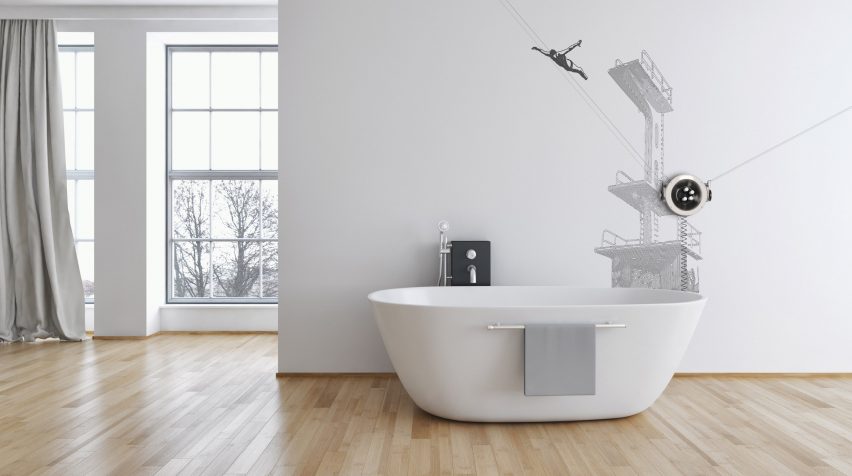
While Scribit comes with its own patented "reversible" ink markers in red, blue, yellow and black that leave no trace, it can also mount any ordinary non-erasable marker.
Taking its name from the Latin term meaning "she/he writes," the robot follows on from another "writing machine" being developed at Ratti's firm, Carlo Ratti Associati.
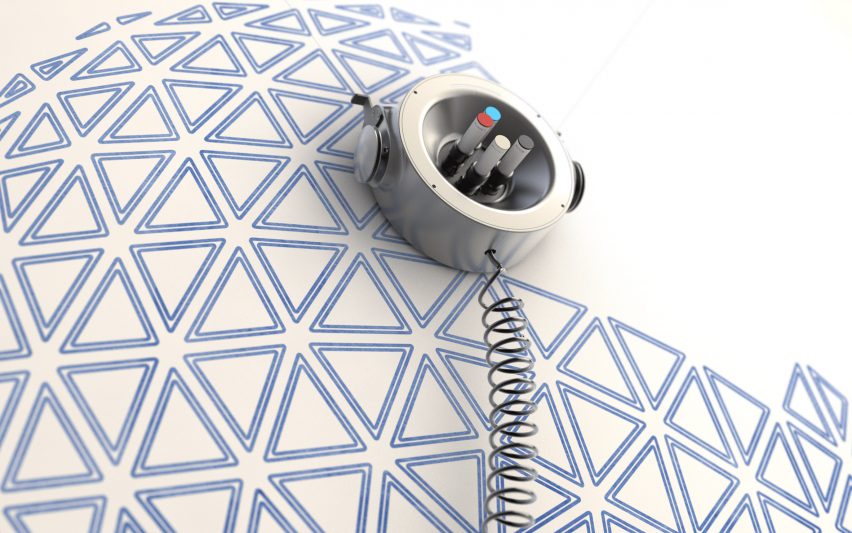
The firm presented the OSArc installation at the Istanbul Design Biennale in 2011, where a plotter registered the text taken from the Open Source Architecture Manifesto Wikipedia page, and write it onto a wall. The plotter would update the text as the Wikipedia page changes.
Scribit will be on show as part of Ratti's Milan design week installation, named Living Nature, located at the city's Piazza del Duomo.
For job opportunities at Carlo Ratti Associati, visit their company profile on Dezeen Jobs.